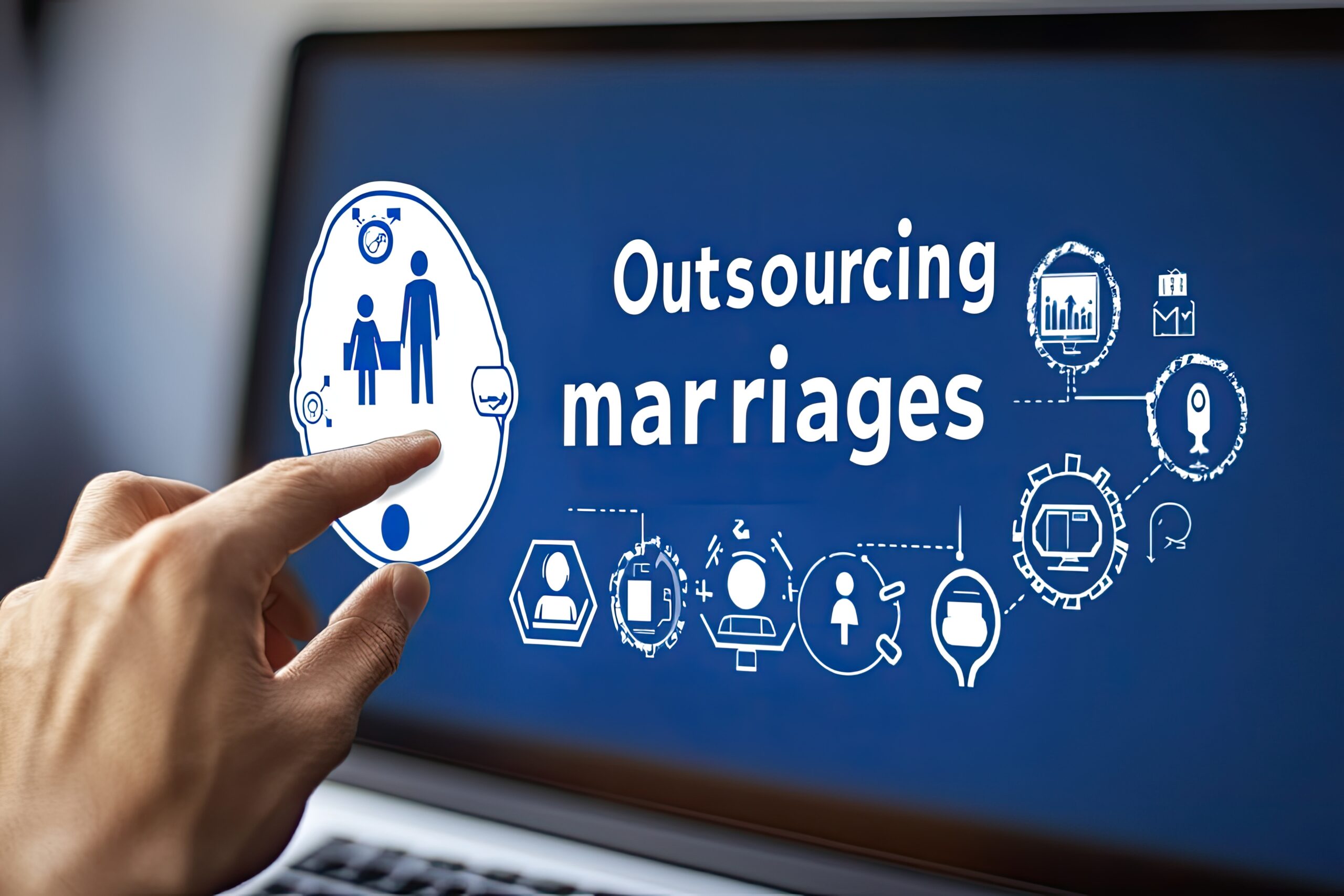 I have been in the marketing game a long time. When I wrote my first book, I was introduced to the world of marketing influencers. Although I was trying to become one, I never made it my main source of income; instead, I used it as a way to introduce myself to potential clients. That was so 2015.
I have been in the marketing game a long time. When I wrote my first book, I was introduced to the world of marketing influencers. Although I was trying to become one, I never made it my main source of income; instead, I used it as a way to introduce myself to potential clients. That was so 2015.
Now it's 2025, and most of those influencers are still here and doing all the same things: Master Classes, Conferences, Virtual Events, Coaching, Mastermind Groups, and more. The hot topics:
- 2015: Building an Email List, Lead Magnets, Mobile Marketing, Google Ads
- 2020: Sales Funnels, Short Form Video, SEO/SEM, Voice Search
- 2025: Long Form Video, Personalization, and Flooding the Zone Content with AI Everything
Here's the deal. When someone is an expert in all those things, they are a thought leader in very few. Just like AI uses current and past information, influencers simply grab hold of the latest trends and then start to tell you they know the secret to making them work for you and your business.
Not all influencers are bad. Many offer valuable information and genuine thought leadership. However, there is a group that excels at following trends and monetizing them by selling hype with no promise of results.
The Human Condition
 In reality, AI can teach you the same thing for free if you know how to use it. If you have a system presented in a step-by-step method, it's easier than doing it yourself through a system of trial and error. However, I also believe that lessons learned through trial and error become a valuable tool for understanding what AI can and cannot do for us.
In reality, AI can teach you the same thing for free if you know how to use it. If you have a system presented in a step-by-step method, it's easier than doing it yourself through a system of trial and error. However, I also believe that lessons learned through trial and error become a valuable tool for understanding what AI can and cannot do for us.
There is a secret to achieving effective marketing results—it's about people. Tips and tricks tend to oversimplify, but simple does not outsmart complex. People are complex, along with their experiences, circumstances, and individual quirks and preferences.
AI, at its core, is math. Just a series of 1s and 0s that are sequenced in a way that you think you are having a human conversation. If you ask a human a question, they have a fairly limited bandwidth of answers. AI, on the other hand, has an unlimited bandwidth of answers.
To effectively communicate with your perfect audience, it is essential to understand three key things about them:
- Their IQ. Why does communicating above or below their comfort zone of comprehension confuse and alienate them?
- Their EQ. How can you appeal to what emotionally charges or drains their attention and energy?
- Their SQ. What information are they consuming, and how do you establish and build relationships with them?
AI can help with that. Every time I have a conversation with a new prospect or vendor, I use Crystal Knows to try to get a profile of their personality and communication preferences. It's right 80% of the time, but it's a stronger starting point than nothing.
IQ (Intelligence Quotient):
 I'm sure that you remember the TV show, “Are You Smarter Than A 5th Grader?” But when it comes to presenting marketing content to B2B customers, most content marketers and usability experts recommend aiming for an 8th-grade reading level, as it strikes a balance between accessibility and professionalism.
I'm sure that you remember the TV show, “Are You Smarter Than A 5th Grader?” But when it comes to presenting marketing content to B2B customers, most content marketers and usability experts recommend aiming for an 8th-grade reading level, as it strikes a balance between accessibility and professionalism.
However, for more technical B2B industries, a slightly higher grade level (up to 10th or 11th grade) may be appropriate, especially when the audience includes highly educated decision makers or the content requires technical detail.
When creating and presenting content, it is essential to consider your audience's cognitive abilities, including problem-solving, logical reasoning, pattern recognition, and memory. It reflects a person's ability to understand and process your information effectively.
The bottom line is you don't want to oversimplify or throw around a lot of jargon with your messages. I checked this text, and it was, in fact, at an 8th-grade level.
EQ (Emotional Quotient):
 You not only want your audience to learn something, but you also want them to feel something. I am sure that some readers will have issues with my views on AI, while others will appreciate my take on its use or potential overuse. My goal is to make you feel heard, hopeful, and energized to take action.
You not only want your audience to learn something, but you also want them to feel something. I am sure that some readers will have issues with my views on AI, while others will appreciate my take on its use or potential overuse. My goal is to make you feel heard, hopeful, and energized to take action.
Emotional intelligence measures an individual's ability to understand, manage, and express their own emotions, as well as empathize with the emotions of others. You want to use empathy in your communications and present a problem (making people feel uneasy), and then provide a solution (making them feel like there is hope) so they can resolve that problem.
The bottom line is you want to entertain, educate, and evoke emotions that your audience is comfortable feeling. Avoid creating anger and strive to leave them with a positive emotional experience.
SQ (Social Quotient):
SQ (in my humble opinion) has two parts. The traditional definition is about creating a bond with another human being. The other (which is out of our control online) is the timbre of the social or electronic platform we use. Your message has a different feel when it's posted on X or Facebook than it does on LinkedIn. Email (especially broadcast or automated) is viewed differently in each person's inbox. You are subject to the mood created by the platform.
a bond with another human being. The other (which is out of our control online) is the timbre of the social or electronic platform we use. Your message has a different feel when it's posted on X or Facebook than it does on LinkedIn. Email (especially broadcast or automated) is viewed differently in each person's inbox. You are subject to the mood created by the platform.
SQ, also known as social intelligence, refers to the ability to interact and communicate effectively with others, build and maintain networks, and foster relationships. It includes skills like empathy, adaptability in social situations, and teamwork.
You may need to navigate multiple environments, including in-person, over the phone, on Zoom or Teams, through search results (SEO/AEO), via social media, or email. All of those combine to start building and fostering relationships.
People who don't know you yet will have a different perspective than those who know you, and especially those with whom you are already doing business. That means you may need to create multiple messages to cater to different audiences across multiple platforms. It's not easy, but that is what AI can do well or automate poorly if you don't feed it the right information or perspective about individuals.
The bottom line is that the more generic your message, the fewer people it will connect with. Segmentation and personalization are expected to the greatest extent possible in order to establish and build lasting, profitable business relationships.
Closing Thought
 In this attention-based economy, influencers are everywhere. They try to build the biggest audience to sell products from themselves and other companies through affiliate links.
In this attention-based economy, influencers are everywhere. They try to build the biggest audience to sell products from themselves and other companies through affiliate links.
There are two ways to achieve results: learn to do it yourself or hire someone to do it for you. I have taught many people to do it themselves, but what they learned was only one skill, like posting to social media, reading Google Analytics, Mastering LinkedIn, etc. The problem is that people who achieve real results generally have to learn and do so much that they never master much of anything. They learn to do a good but not great job with any of them.
Additionally, it requires writing high-quality content, posting it to a platform, directing people to connect with you, mastering email and social media, and understanding the metrics to turn the process into profits. Trust me… It's a lot to learn and do.
This is why I have never been successful with teaching do-it-yourself options, and I have changed my focus to a done-for-you system. I work to my strengths and have a team of on-demand experts who are more skilled than I am at handling all the tasks necessary for success. Each of them has other customers, so they bring a breadth of experience that is rare to find. Each is passionate, professional, and proficient in optimizing every part needed to deliver the right message to the right person.
In order for IQ, EQ, and SQ to work and fulfill the promise of profits, we need to include one more “Q” in the mix. Quality is essential in each of those to achieve the results that can turn your messages into lasting quality relationships.
______________________________
Comment below and share your thoughts, ideas, or questions about business-to-business sales and marketing today! Do you have a sales or marketing communications strategy that works for you? What tips or techniques can you share that work for you and your business?
To learn more about this and other topics on B2b Sales & Marketing, visit our podcast website at The Bacon Podcast.








